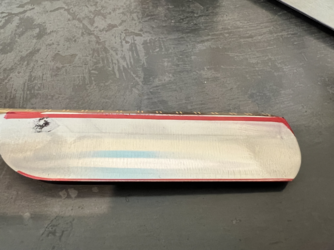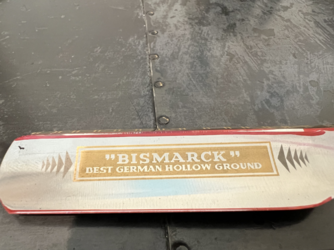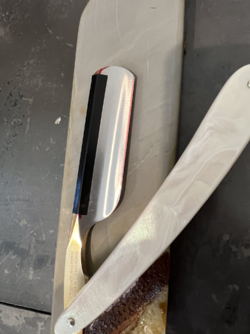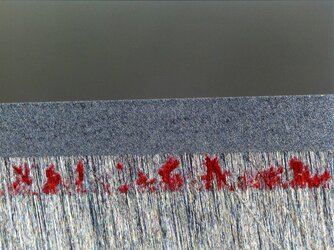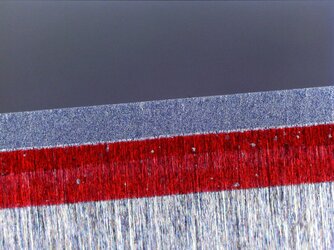I have one razor that I've been having trouble honing and I'm trying to decide what to do next. This doesn't seem to be a big "problem", but I'm trying to learn without messing up the razor too much. It started with a little bit of "wobble" on a known flat surface. I started with the "just hone it" to flatten it out, I reached the point where I didn't want to remove much more spine so I started doing rolling X - this worked OK on one side of the blade but I had issues getting consistency across the edge on the other side.
I just did a couple of pictures with 2 light strokes on a 4k with red marker. I put tape on it for my last attempt, but just took it off to see what was happening on the spine - there is still marker on the edge, but the worn off pieces are similar to what I see all the way to the edge with tape.
Holding the edge up to a straight edge shows that the heel portion falls away slightly and that the overall edge has a very slight smile.
I'm trying to decide on going back to honing this without tape until it flattens out vs. living with it and figuring out why my rolling X in one direction doesn't seem to quite work out the way I'm expecting.
Advice appreciated!
I just did a couple of pictures with 2 light strokes on a 4k with red marker. I put tape on it for my last attempt, but just took it off to see what was happening on the spine - there is still marker on the edge, but the worn off pieces are similar to what I see all the way to the edge with tape.
Holding the edge up to a straight edge shows that the heel portion falls away slightly and that the overall edge has a very slight smile.
I'm trying to decide on going back to honing this without tape until it flattens out vs. living with it and figuring out why my rolling X in one direction doesn't seem to quite work out the way I'm expecting.
Advice appreciated!
